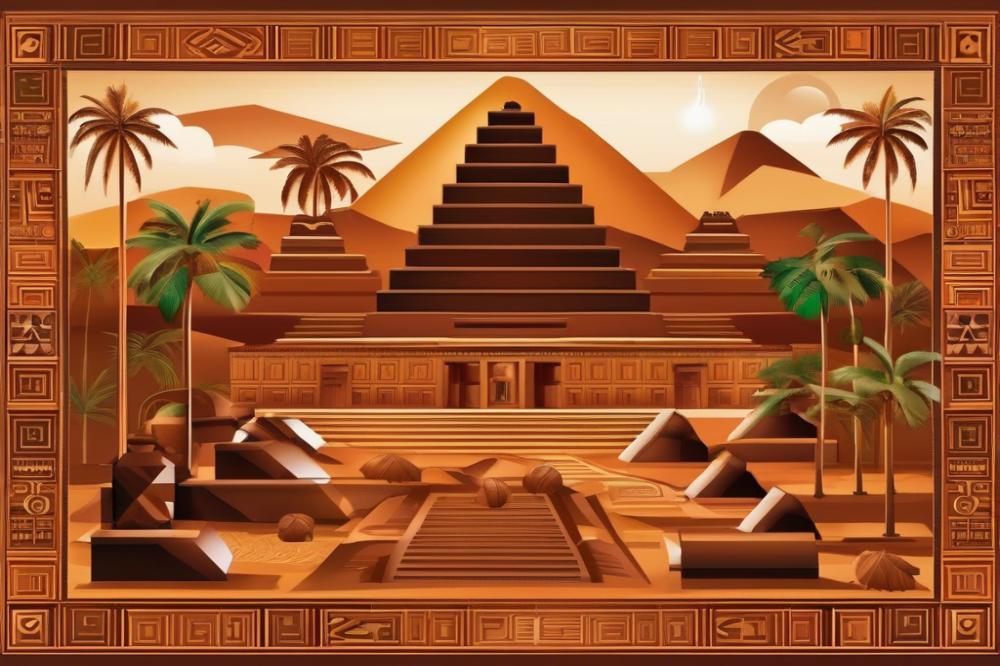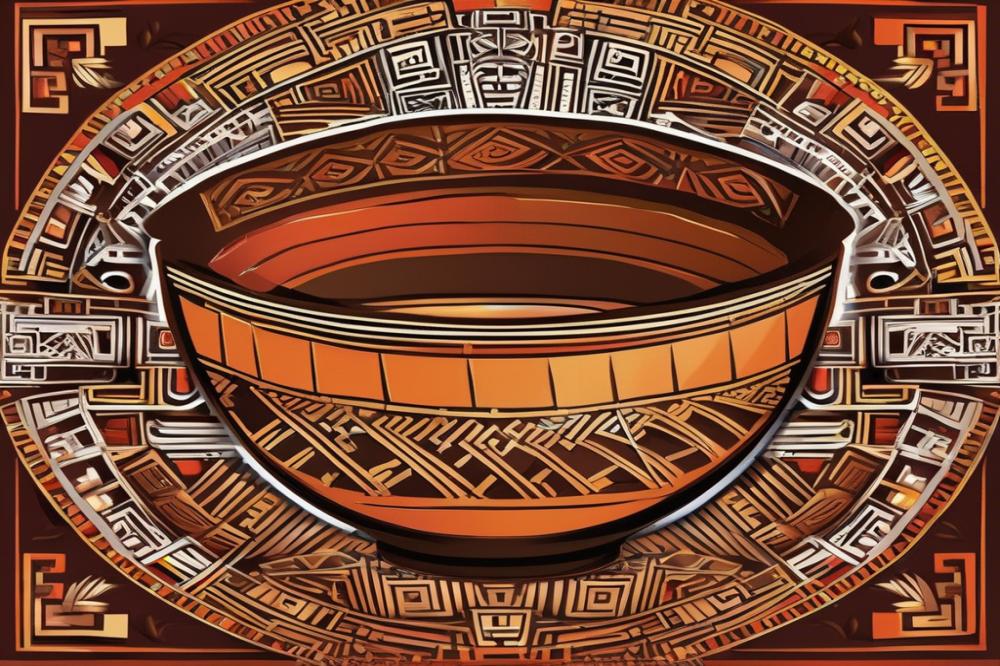Ireland’s Love Affair with Sweet Treats
Ireland has long embraced the delights of sweet treats, with a special fondness for one in particular. chocolate has woven itself into the fabric of Irish life, transcending mere indulgence to become a symbol of celebration and comfort. From their simplest origins to contemporary enjoyment, these experiences shape a rich chocolate culture that is both cherished and evolving.
The importance of this passion can be seen in various aspects of Irish culture and society. Traditional desserts often feature chocolate, highlighting its role at family gatherings and festive occasions. Whether served as a rich cake or paired elegantly with fruit, these creations showcase the deep appreciation that people have for this sweet delight.
Modern consumption of gourmet chocolate has also soared in recent years. Artisanal producers across the country are crafting unique offerings, often using locally sourced cocoa. These small businesses are dedicated to providing quality products that reflect Ireland’s unique character and tastes. As a result, the country is experiencing a revival of interest in handcrafted confections, with an emphasis on sustainable practices.
In terms of consumption patterns, Ireland finds itself among the top chocolate-loving nations in Europe. The passion for chocolate is palpable, making it a significant player in global trends. This enthusiasm places Ireland at the forefront of a movement that celebrates both tradition and innovation in the world of sweet treats, ensuring that chocolate remains a beloved staple in homes across the nation.
The History of Chocolate in Ireland

Origins of Chocolate in Ireland
Chocolate’s journey to Ireland began in the 17th century. Spain was one of the first European countries to embrace cocoa. After its introduction, the rich, bitter drink started to make its way to other parts of Europe. By the 18th century, Ireland began to adopt this new craze. The wealthy enjoyed it at first, showcasing their sophistication. Other folks looked on and desired to taste this luxurious beverage. Social gatherings often featured the sweet drink as a symbol of status.
Historical Milestones in Chocolate Consumption
The 19th century marked a turning point for sweet treats in Ireland. Factories emerged, and cocoa became more accessible to the public. Companies began producing bars and other products, shifting consumption patterns. People no longer just drank chocolate; they now enjoyed it in various forms. Local producers started crafting Irish desserts that featured cocoa as a central ingredient. Festivals and celebrations often included these delights, further embedding the sweetness into Irish culture.
Influence of Cocoa Imports on Irish Society
Cocoa imports had a significant impact on society. As more products became available, interest grew among the general population. Families began to explore different recipes, creating unique variations of traditional sweets. Artisanal chocolate also found a place in the market, attracting attention from those seeking gourmet options. This trend helped to foster a vibrant chocolate culture across the nation. Moreover, the rise of local producers contributed to a sense of community. People began to take pride in supporting these businesses, celebrating their craftsmanship and creativity.
traditions Surrounding Chocolate

In Ireland, a rich history of desserts showcases the love for sweet treats. Traditional Irish recipes often highlight the use of cocoa in various baked goods. Among these delights, the well-known chocolate biscuit cake stands out. This dessert, made with crushed biscuits and rich flavors, has delighted generations. Other classics include fudge and cakes that use locally sourced ingredients, showcasing Irish culinary creativity.
Cultural significance is evident during celebrations. From birthdays to weddings, sweet delicacies play a crucial role. For instance, sweets are common during holidays like Easter and Christmas. Many families make homemade chocolates to share with loved ones. These acts of sharing highlight the emotional connection families have with their culinary creations.
traditions influence the way people enjoy chocolate today. Artisanal producers have surged in popularity. They emphasize quality and locally sourced ingredients, crafting gourmet chocolate that tells a story. This reflects a shift toward honoring past methods while embracing contemporary tastes. modern consumption no longer focuses solely on mass-produced items. Instead, consumers look for unique flavors and textures that echo Ireland’s chocolate history.
Local producers contribute to the vibrant chocolate culture. They blend traditional techniques with modern innovation, creating a diverse range of sweet offerings. Many now experiment with flavors like sea salt or whiskey-infused treats. These creations resonate with those wanting something different. Their approach not only preserves traditions but also welcomes new tastes.
Modern Consumption of Chocolate
Current trends show a fascinating shift in how people in Ireland enjoy their sweet treats. Chocolate culture has evolved, reflecting broader changes in societal tastes. Consumption has become more mindful, with many opting for high-quality, ethically sourced options. Traditional Irish desserts are being reimagined, incorporating gourmet selections that highlight local ingredients. Many consumers are eager to explore beyond the basics, delving into a world of flavors and textures.
Artisanal chocolate has gained significant traction in recent years. Local producers are embracing their heritage, crafting chocolates that celebrate Ireland’s cocoa history. Small-scale makers often use traditional techniques combined with innovative flavors. This artisan movement fosters a sense of community and pride among consumers. Buying from these local artisans supports the economy and encourages sustainability. Custom flavors are becoming a staple, with unique varieties reflecting local tastes and ingredients.
Gourmet chocolate is undoubtedly impacting consumer choices. For some, the appeal lies in its rich tasting notes and luxurious presentation. Others appreciate the stories behind the products, from bean to bar. People are increasingly aware of where their food comes from and how it is made. As they seek out these premium offerings, the bar is raised for mass-produced alternatives. The result? A more educated and curious customer base, eager to taste the difference.
In this modern landscape, chocolate has transcended mere indulgence. It has become a symbol of quality, craftsmanship, and local pride. With each bite, consumers are connecting to a broader narrative—one that intertwines Ireland’s past with its vibrant culinary future. The love affair with chocolate continues to deepen, creating a delightful tapestry of flavors that reflect the heart and soul of Irish traditions.
The Chocolate Culture in Ireland
Across Ireland, the role of chocolate in social gatherings and celebrations is significant. It brings people together. Birthdays, holidays, and even simple get-togethers often feature sweet treats as a central element. Birthdays are incomplete without a slice of rich cake topped with creamy frosting. Christmas celebrations become a feast for the senses with decadent desserts at each table. Such traditions bind families and friends, creating shared memories around delicious confections.
Popularity of local desserts has increased in recent years. Irish desserts often embrace rich flavors, with dark cocoa being a favorite ingredient. The classic dessert, chocolate mousse, shows just how luxurious a simple recipe can be. Many people indulge in gourmet varieties crafted by local producers, highlighting the country’s dedication to high-quality ingredients. Artisanal chocolate shops have popped up everywhere, providing unique treats that delight the palate. A visit to these shops reveals intricate designs and unexpected flavors, showcasing a range of creativity and skill.
Among the Irish, chocolate consumption has evolved into a lifestyle choice, rather than a mere indulgence. People now seek out sustainable sources and organic options. Conscious consumerism is part of the modern chocolate experience. This shift reflects a growing awareness of health and ethics in food choices. The history of chocolate also influences this decision. Knowing where their products come from is important to many shoppers. This trend encourages the growth of local producers who prioritize transparency in their sourcing and production methods.
Spotlight on Irish Desserts
Irish desserts have a special place in the hearts of many. These sweet treats often showcase rich flavors, blending tradition with modern consumption. While some recipes have remained unchanged, others have evolved over the years. Chocolate culture has played a significant role in this evolution, adding depth and allure to many dishes. For instance, the beloved baked chocolate tart has roots in classic pastry, yet it has taken on new life with creative twists from contemporary chefs.
Traditional and Contemporary Irish Desserts Featuring Chocolate
Traditional desserts like the chocolate mousse and layered cakes have been enjoyed for generations. They often feature simple ingredients, allowing the cocoa’s rich flavor to shine through. Contemporary versions, however, reveal a more playful approach, using ingredients like sea salt or local fruits to enhance the overall experience. This blend of practices keeps dessert-making fresh and exciting, inviting both locals and tourists to indulge.
Influence of Chocolate on the Evolution of Dessert Recipes
As Ireland has embraced chocolate, its influence on dessert recipes has become undeniable. The introduction of artisanal chocolate has inspired many bakers and home cooks alike. These local producers often experiment with different cocoa blends, finding new ways to elevate classic desserts. Old recipes are reimagined as chefs incorporate gourmet chocolate into puddings, pastries, and even traditional Irish barmbrack.
Celebrated Chefs and Their Contributions to Chocolate Desserts
Renowned chefs in Ireland have made significant contributions to chocolate desserts. Their innovative creations showcase the versatility of this beloved ingredient. Take, for instance, the works of pastry chefs who combine chocolate with Irish whiskey or stout, creating unique flavor profiles. Many of them conduct workshops and classes, sharing their expertise with aspiring dessert-makers. Their influence helps ensure that the love for sweet treats continues to thrive in Irish kitchens.
Final Thoughts on Ireland’s Chocolate Connection
Throughout history, Ireland has developed a rich and deep relationship with sweet delights. From ancient customs to contemporary preferences, the enjoyment of chocolate has ebbed and flowed. Local favorites often reflect a blend of cultural heritage and evolving tastes. Imported brands have found a place alongside beloved homegrown varieties. Both factors have shaped the unique palate of the Irish consumer over generations.
Future trends in Ireland suggest a growing interest in premium options and ethical sourcing. Many people are becoming more aware of where their treats originate. This shift toward responsible consumption may redefine how chocolate is enjoyed in many homes. Artisan shops are likely to gain even more popularity as consumers seek quality over quantity. This potential focus on local ingredients could help strengthen community ties while keeping traditions alive.
Preserving the rich customs associated with these delicacies is essential. Modern consumption does pose challenges, but there is also considerable opportunity. By celebrating local makers and their craft, a new generation can learn about the significance of these practices. Engaging young people through workshops or festivals can foster appreciation. In the end, the future of Ireland’s sweet indulgence lies in a balance between honoring the past and embracing innovation.



